Robert Charles Venturi Jr. was an American architect, founding principal of the Venturi firm, Scott Brown and Associates, and one of the major architectural figures of the twentieth century.
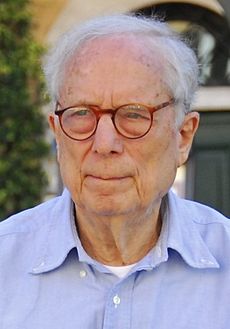
Image source:https://en.wikipedia.org/wiki/Robert_Venturi#/media/File:Robert_Venturi_2008_Rome_(cropped).jpg
Together with his wife and partner,Denise Scott Brown,he helped to shape the waythat architects, planners, and students experience and think about architecture and the American-built environment. Their buildings, planning, theoretical writings, and teaching have also contributed to the expansion of discourse about architecture.
Venturi’s Education and Early Years
Venturi was born in Philadelphia to Robert Venturi Sr. and Vanna Venturi and was raised as a Quaker (historically Christian group of religious movements). Venturi attended school at theEpiscopal Academy in Merion, Pennsylvania and graduatedsumma cum laudefrom Princeton University in 1947. He later attended the educational program at Princeton under ProfessorJean Labatutand developed an approach to architectural theory and design that从基于“增大化现实”技术chitectural history and commercial architecture in analytical terms, as opposed to stylistic ones.
Image source:https://en.wikipedia.org/wiki/Guild_House_(Philadelphia)
Working with Saarinen and Kahn, Awards and Teaching In 1951 he briefly worked underEero Saarinenin Bloomfield Hills, Michigan, and later forLouis Kahnin Philadelphia. He was awarded theRome Prize Fellowship at the American Academy in Rome in 1954, where he studied and toured Europe for two years.
From 1959 to 1967, Venturi held teaching positions at the University of Pennsylvania, where he served asKahn‘s teaching assistant, an instructor, and later, anassociate professor. It was there, in 1960, that he met fellow faculty member, architect and plannerDenise Scott Brown, who he would marry 7 years later in 1967.
Venturi also taught at theYale School of Architectureand was a visiting lecturer with Scott Brown in 2003 atHarvard University‘s Graduate School of Design.
他死于9月18日,2018年,在费城摇来摇去m complications of Alzheimer’s disease.
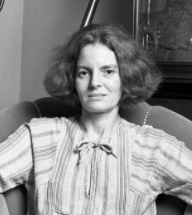
Image source:https://en.wikipedia.org/wiki/Robert_Venturi#/media/File:Denise_Scott_Brown_1978_%C2%A9_Lynn_Gilbert.jpg
The Manifestos and Counter Revolutionary Design
Venturi published his “gentle manifesto”,Complexity and Contradiction in Architecturein1966; where he addresses to an approach forunderstanding architectural composition and complexity, and the resulting richness and interest. Citingvernacularas well as high-style sources, Venturi drew new lessons from the buildings of architects familiar (Michelangelo,Alvar Aalto) and then-forgotten (Frank Furness, Edwin Lutyens).
He made a case for “the difficult whole” rather than the diagrammatic forms popular at the time, gaining the label of being acounter-revolutionary designer.
Immediately hailed as a theorist with radical ideas, Venturi went to teach a series of studios at theYale School of Architecturein the mid-1960s. Later on, in 1977, he published a new manifestoLearning from Las Vegas: the Forgotten Symbolism of Architectural Form, even more stingingrebuke to orthodox modernismand elite architectural tastes. The book also coined the terms “Duck” and “Decorated Shed”, descriptions of the two predominant ways of embodying iconography in buildings.
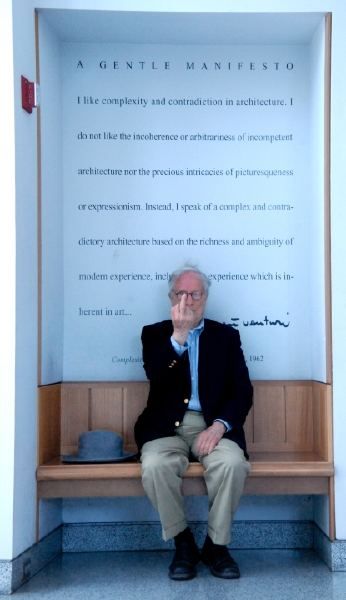
Image source:https://arch-rivals.tumblr.com/post/60432294449
Venturi’s Architectural Style
The architecture of Robert Venturi, although perhaps not as familiar today as his books,helped redirect American architecture away from a widely practiced, often banal,modernismin the 1960s to a moreexploratory designapproach that openly drew lessons from architectural history and responded to the everyday context of the American city.
Venturi’s buildings typically juxtapose architectural systems, elements, and aims, to acknowledge the conflicts often inherent in a project or site. This“inclusive” approachcontrasted with the typical modernist effort to resolve and unify all factors in a complete and rigidly structured—and possibly less functional and more simplistic—work of art. The diverse range of buildings of Venturi’s early careeroffered surprising alternatives to then-current architectural practice, with “impure” forms (such as theNorth Penn Visiting Nurses Headquarters), apparently casual asymmetries (as at theVanna Venturi House), and pop-style supergraphics and geometries (for instance, theLieb House).
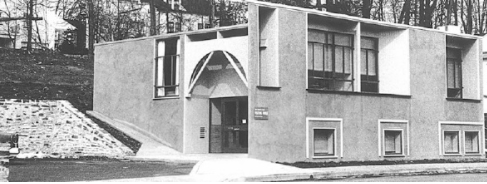
Image source:http://www.bobanddenise.org/project.php?code=NVN&pos=0
Prominent Works by Robert Venturi
Vanna Venturi House, Philadelphia, USA, 1964
TheVanna Venturi House, built for Robert Venturi’s mother, was completed inChestnut Hill, Pennsylvania, in 1964and is considered one of the earliest examples ofpostmodern architecture. Its design exploresclassic formsand plays withsymmetry and scale, and its main features are clearly drawn on those used for functional purposesby modernist architects likeMies van der RoheandFrank Lloyd Wright. However, Venturi also included a host of ornamental details to give it its postmodern edge, like themonumental gabled wall at the front, andan archthat serves no purpose.
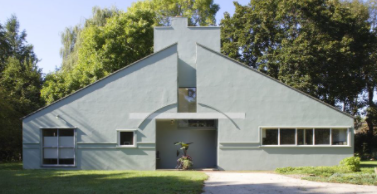
Image source:https://www.curbed.com/2016/11/17/13666216/vanna-venturi-house-tour-denise-scott-brown-robert-venturi
Fire Station #4, Indiana, USA, 1968
One of Venturi and Scott Brown’s early projects wasFire Station #4in Columbus, Indiana. In the late 1960s, he devised a design which comprised asimple floor plan, with the apparatus room placed on one side andliving quarterson the other. The project also included a hugehose-drying towerrising in the middle of the station with a golden “4” at the top.
White-glazed brick covers most of the front of the building but stops just short at the edges, where it is replaced with red brickwork.
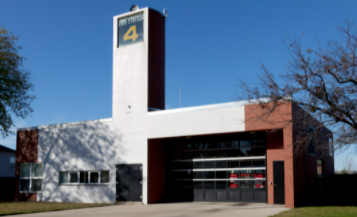
Image source:https://en.wikipedia.org/wiki/Fire_Station_Number_4_(Columbus,_Indiana)
Curiosity
Venturi is also known for having coined the maxim “Less is a bore”, apostmodernantidote toMies van der Rohe‘s famousmodernistdictum “Less is more”.
Info sources:
http://venturiscottbrown.org/
https://www.vsba.com/
https://en.wikipedia.org/wiki/Robert_Venturi
https://www.dezeen.com/2018/09/19/robert-venturi-best-postmodern-architecture-projects/
https://www.architecturaldigest.com/gallery/robert-venturi-denise-scott-brown-buildings

